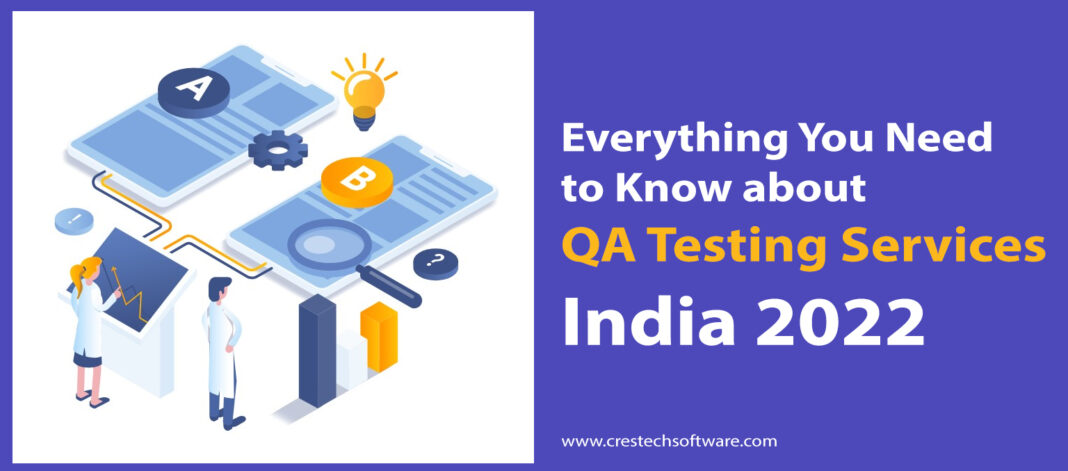Description
Many companies offer software testing & QA services,which is the most imperative aspect of software development. QA in software development provides value and ensures a product or service meets the criteria. However, when software developers think about QA testing, two types of QA testing pop up in their minds (manual & automated), but there are many others that should be considered by software development companies.
The Various Types of QA Software Testing
Every software tester encounters a range of QA testing software services, some of which they have worked on and others they have just heard of. Unfortunately, not everyone knows the many forms of QA testing and their importance in product quality.
At a high level, testing can be divided into two types:
Manual and automated;
However, there are various software testing services types.
Here are ten various types of QA testing:
1. Unit Testing
Unit testing is a form of ground-level testing carried out to test individual units or functionality of the program under development. Unit testing helps to understand the core functioning of the code and tests the likelihood of any change generating a defect, which can then be rapidly recognized and repaired. Unit tests provide the advantage of isolating a function, class, or method and testing just that piece of code. It is carried out at the time of development of software and usually performed by the developers; however QA engineers also do this testing.
2. Components Testing
Following the completion of unit testing, component testing enables testers to test numerous units or components in a single code. Component testing uses real data and examines how individual components work without integration. It helps to find problems that might occur once pieces are combined. Component testing verifies that the component’s functionality is correct and as defined.
3. Integration Testing
The last step of the QA testing lifecycle is integration testing, which determines if your application’s various modules or services perform effectively together. Integration testing determines if a system or component meets the needed functional criteria by grouping and testing them together. It is helpful for software testing for mobile applications. It efficiently conducts critical user-based situations.
4. End-to-End Testing
End-to-end testing is useful for evaluating the functionality and performance of a product in real-world circumstances. End-to-end testing duplicates user behavior in product-like environments and verifies that user flows work as anticipated. End-to-end testing makes it easier to detect issues before delivering software to end users.
5. Performance Evaluation
Performance testing enables testers to examine the system’s behavior under considerable stress. Performance tests ensure the product’s reliability, stability, and availability by evaluating various sections of the product under varying loads and determining if more load would damage system performance. Performance evaluation is helpful for software testing for startups.
6. Regression Analysis
Regression testing enables testers to test an application after it has been changed or modified. It assures that previously produced and tested software functions as anticipated after bug patches, software additions, or configuration changes by executing functional and non-functional tests.
7. Sanity Checks/Testing
Sanity testing, a kind of regression testing, assists testers in determining if new code changes or feature upgrades operate well enough to warrant a substantial testing effort. Sanity testing aids in the rapid identification of flaws in basic functioning. For instance, it can be used for software testing in mobile applications to check the payment function.
8. System Validation
System testing allows QA teams to assess how the many components of an application interact in a whole, integrated system. System testing evaluates the entire program operation based on requirements, ensuring that every kind of user input delivers the correct result.
9. Smoke Testing
Smoke testing entails examining the application’s fundamental operation to see whether important system features are functioning as planned. Smoke tests, especially beneficial after a fresh build, aid in assessing if more costly tests on the application in the newly deployed environment are required.
10. User Acceptance Testing (UAT)
User acceptance tests are the last test in the QA lifecycle. They are performed immediately before the final release to ensure that the product or application can handle real-world circumstances. It verifies whether the system meets business requirements by reproducing user behavior and rejects modifications if specific criteria are not fulfilled.
Wrapping Up
Various tests must be performed in software testing services to guarantee the product work as intended for different users and under other conditions. Understanding the multiple forms of QA testing is essential for determining which tests to execute at which step of the development lifecycle and ensuring that the product you offer to your users satisfies the appropriate quality, reliability, and performance criteria.




















